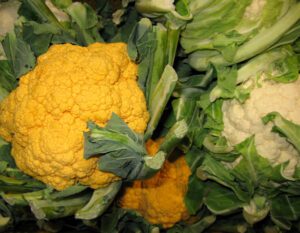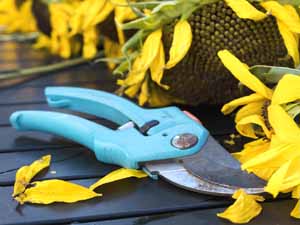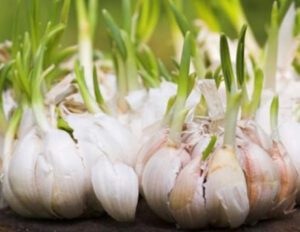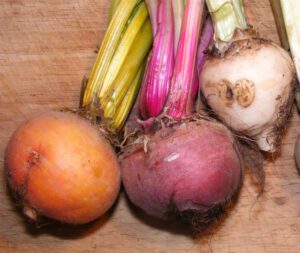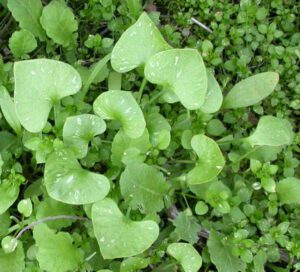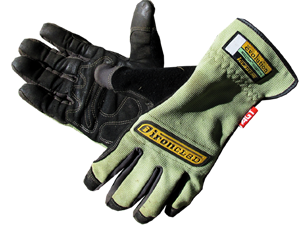Growing dill in home garden is very easy and it can be a great addition to your herb or vegetable garden.
You can easily start growing dill if you have a well-drained soil in a sunny location. Dill plants can also grow in slightly acidic soil.
And the plants are widely grown in Eurasia where the leaves and seeds are used as a herb or spice for flavoring food.
Dill (Anethum graveolens) is an annual herb in the celery family Apiaceae, and it is the only species in the genus Anethum.
Dill is known by many other names in many different places around the world.
In India it is known as Sholpa (Bengli), Shepu (Marathi, Konkani), Soa/Soya (Hindi), Soa-Kuru (Telugu), Sabbasige Soppu (kannada), Pakhon (Manipuri), Sadakuppi (Tamil), Suva (Gujarati), Shevid (Persian), Chatakuppa (Malayalam) and Soa (Punjabi). It is known as Shiluo in China, Tai la in Vietnam, Phak Chee Lao in Thiland and Shabat or Shabath in the Arab World.
Dill is most commonly used in soups and stews and for pickling. Fresh and dried dill leaves are widely used as herbs in Europe and central Asia.
Dill oil is extracted from the leaves, stems and seeds of the plants. And the oil from the seeds is distilled and used in the manufacturing of soaps.
The dill seeds are often used as ingredient in curry powder. It is actually a popular herb in the kitchen, especially in the Asian countries for flavoring everything from pickles to fish.
Nothing is better than home grown fresh dill. Gourmets know that you can’t beat fresh dill for the flavor.
However, the best way to have and enjoy the very freshest dill possible is by growing dill of your own in your home garden.
How to Grow Dill in Home Garden
Growing dill in home garden is very easy, and they can grow happily in both poor and rich soil or in both damp or dry conditions.
But the plants grow best in full sun. Dill plants attracts beneficial insects to your garden.
Here we are describing everything about growing dill in your home garden from planting, caring to harvesting.
First, Select a Good Location
First of all, select a good location for growing dill in your home garden. Dill plants can’t tolerate shade and they grow best in full sun.
They also require good drainage system. So select a good location with good drainage system and availability of full sun.
Prepare the Soil
Dill plants can be grown in almost all types of soil. They can actually grow well in both poor and rich soil. Although preparing the soil by adding some organic materials will be good.

Purchase Seeds
Always try to purchase good quality seeds for growing dill in your home garden. Dill plants are common and the seeds should be easily available in your area.
Just visit any of your nearest market or garden centers for purchasing the seeds. You can also order the seeds online.
Bouquet, Dukat, Herkules, Mammoth and Fernleaf are some good and popular dill varieties that you can choose for growing in your home garden.
Best Time for Growing Dill
If you plan for growing dill for pickling, then plant the seeds every few weeks into midsummer to ensure a constant supply.
But for creating a permanent dill patch, you will need to allow some of the seeds to self-sow each year.
Then you will have plenty of early dill to start the season. Dill plants actually grow best when the soil temperature reach at least 16 to 21º C. Early summer is considered best time for planting dill seeds.
Planting the Seeds
Till the soil and level it, and then sow the seeds directly into the soil. Dill transplants don’t do well, so sowing the seeds directly will be good.
You will need to sow the seeds to about 1/4 inch deep and about 2-3 inches apart (you can thin later). Cover the seeds lightly with soil after sowing seeds and water the bed.
Dill seeds actually don’t germinate faster. And it can take about 10-14 days for the seedlings to appear in the soil.
You should wait more 2 weeks after germination for thinning the seedlings. For growing dill in your home garden, you can plant them next to cabbage or onions.
Caring for the Dill Plants
Dill plants generally require less care for proper growth. Although taking additional care will help the plants to grow better.
Here we are describing about the caring steps for growing dill plants in home garden.
Fertilizing: Dill plants don’t require additional fertilization if you have already prepared the soil by adding organic materials into it. Actually the dill plants can grow in almost any type of soil.
Watering: You will need to water the dill plants freely during the growing season. It will not be wise to let the soil dry out completely. So, water the plants regularly (especially during dry, hot summers), but don’t over water.
Mulching: Mulching is a good way for retaining moisture into the soil. And it also helps to prevent most of the weeds from the garden. You can use organic materials such as hay, compost, straw or grass clippings as mulch.
Thinning: Thinning is important for growing dill plants. Because the dill plants actually don’t grow well if they are overcrowded. Thin the plants to at least 1 ft apart.
Pests and Diseases
Pests and diseases are relatively less in dill plants. You can notice leaf spot and occasionally a few other types of fungal leaf and root diseases in the dill plants. Removing the affected leaves or plants will be good for controlling such situation.
Harvesting
You can start harvesting as soon as the plants have 4-5 leaves. For harvesting, you can either pinch off the leaves or cut them off with knife or scissors. You can also pinch off entire stalks if you have a lot of plants in your garden.
For harvesting dill seeds, just cut the whole flower head off and place in a paper bag. After that, gently shake the bag and the seeds will fall out of the flower head and seed pods. Then you will be able to separate the seeds from the waste.
These are the common ways for growing dill in home garden. Hope you have enjoyed this guide! Happy gardening!

